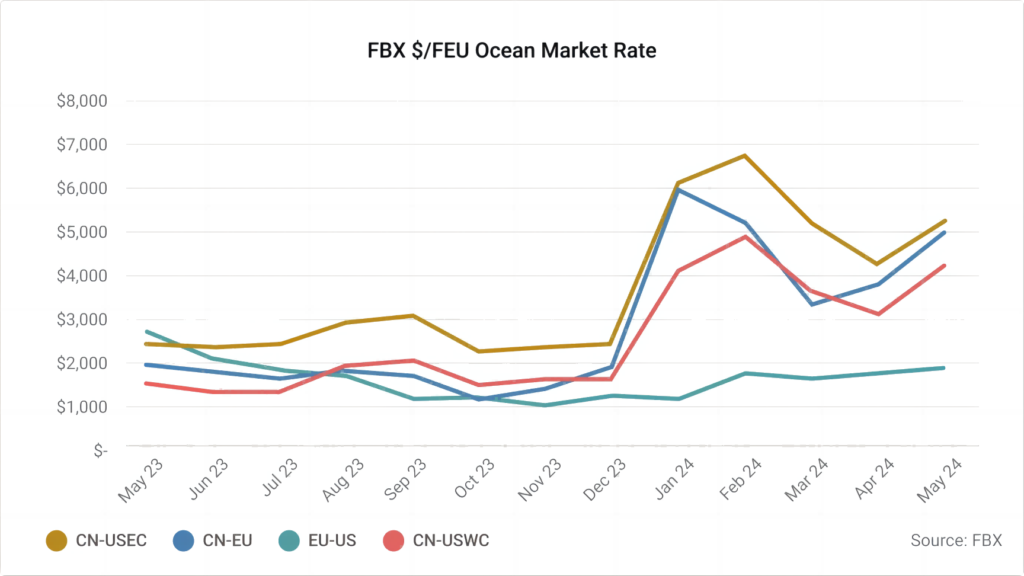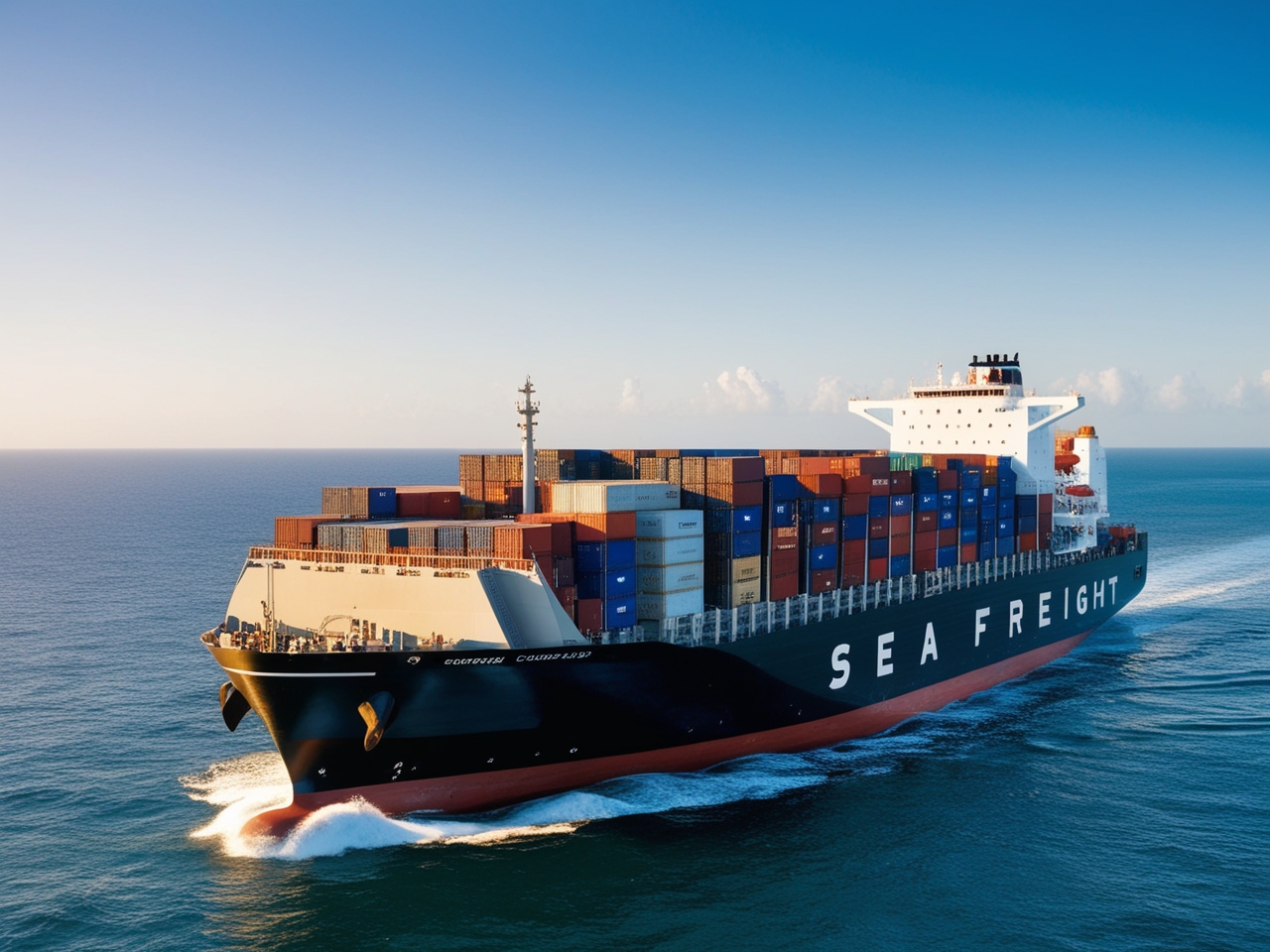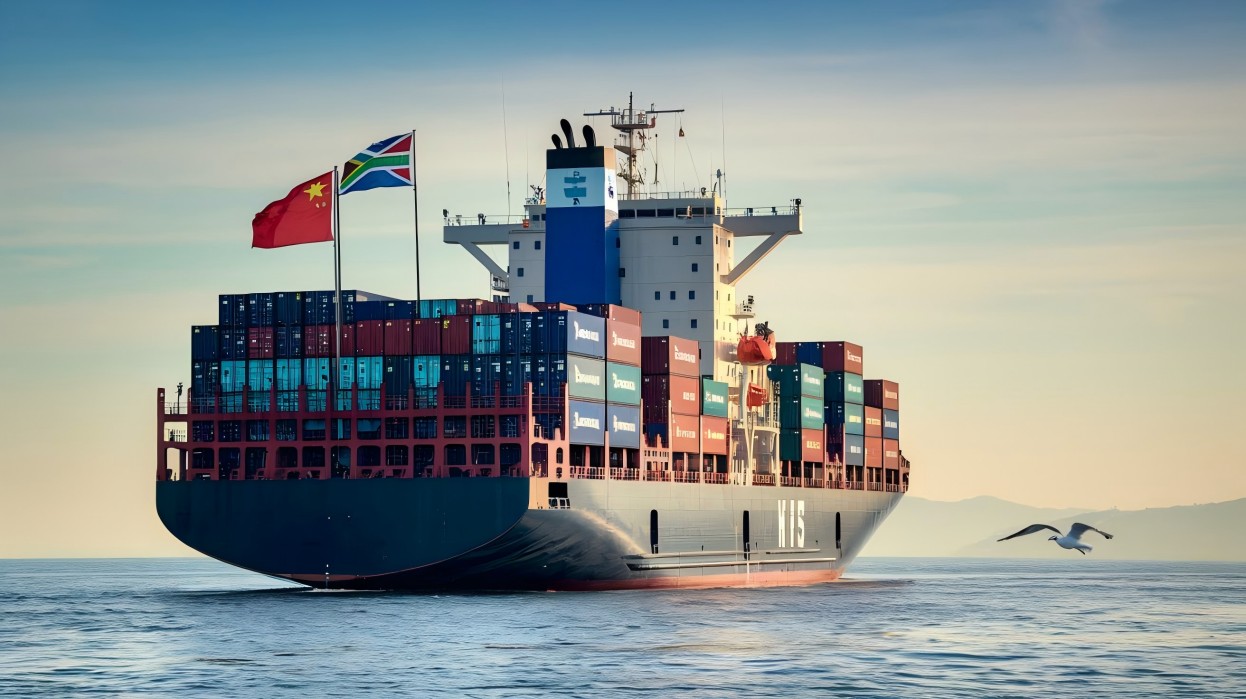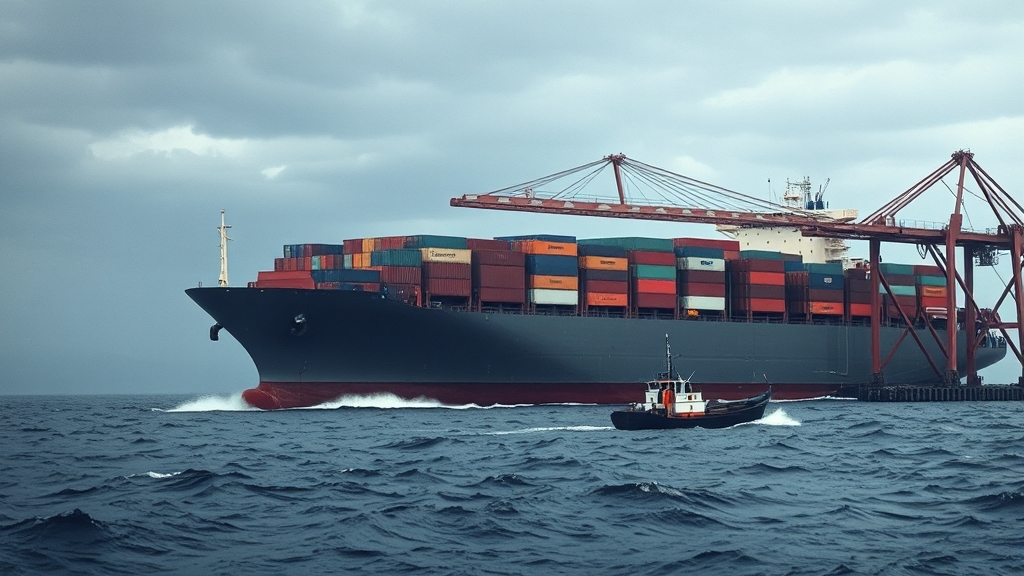The ocean freight market has been experiencing significant disruptions since May, driven by a complex interplay of factors that are stretching capacity and driving rates to unexpected levels. This situation is reminiscent of the pandemic era, leading to an early peak season in the ocean freight market. This development has caught both Non-Vessel Operating Common Carriers (NVOCC) and direct Beneficial Cargo Owners (BCO) by surprise. It is crucial for shippers and logistics providers to understand these market dynamics and how to effectively respond.
Understanding Ocean Peak Season
Typically, ocean peak season occurs from August through October, coinciding with retailers stocking up for the holiday season. During this period, shipping volumes surge, leading to higher and often volatile rates due to the heightened demand for limited shipping capacity.
Factors Accelerating the 2024 Ocean Peak Season
Multiple market drivers are contributing to the early onset of the 2024 peak season, including:
- Red Sea Capacity Absorption The introduction of new vessels has been significantly offset by disruptions in the Red Sea, which are absorbing a considerable portion of global shipping capacity. Ongoing conflicts in the region are forcing carriers to divert from the Suez Canal, opting for the longer route around the Cape of Good Hope. These diversions are reducing available capacity by extending transit times, removing about 9% of global capacity year-over-year, while new builds are only adding about 8%, leading to a persistent capacity deficit. Read more about the: Suez Canal Trade Disruptions.
- Unexpected Demand Factors such as increased eCommerce shipments and restocking of inventories have led to demand levels on Transpacific East Bound (TPEB) and Asia-Europe trade lanes that far exceed original forecasts. This surge in demand has caught the industry off guard, resulting in a scramble for available shipping space.
- Strike Threats Potential strikes by the International Longshoremen’s Association (ILA) in North America and Canadian rail workers have prompted many shippers to expedite their shipments to avoid disruptions.
Implications for Ocean Freight Shipping Rates
Spot rates are on the rise, with General Rate Increases (GRIs) scheduled bi-weekly through mid-June. A Peak Season Surcharge is expected to begin on June 1. Carriers anticipate that these rate hikes will remain in effect in the short term, as vessels departing from Asia are fully booked well into June. The early peak season is likely to extend these conditions for several months.

The Phenomenon of Rolled Containers
Carriers often overbook vessels, expecting some shippers to book the same shipments with multiple carriers or NVOCCs to ensure loading. Currently, shippers and NVOCCs are following through with their bookings rather than canceling, resulting in significant roll pools. Rolled containers, which are typically prioritized for the next sailing, may now be rolled multiple times due to the rapid rate increases.
Read More:
Preparing for an Early Ocean Shipping Peak Season
In light of these challenging market conditions, businesses must act with intention rather than panic. Here are some strategies to navigate the current market:
- Advance Planning Ensure you plan your shipments well in advance to secure space and avoid last-minute surcharges.
- Diversify Carriers Work with multiple carriers to spread risk and ensure you have options if one route becomes congested.
- Monitor Market Trends Stay informed about market trends and potential disruptions to adjust your logistics strategies accordingly.
- Leverage Technology Utilize logistics technology to optimize your supply chain processes and improve visibility.
Read More:





















 Afrikaans
Afrikaans Shqip
Shqip አማርኛ
አማርኛ العربية
العربية Հայերեն
Հայերեն Azərbaycan dili
Azərbaycan dili Euskara
Euskara Беларуская мова
Беларуская мова বাংলা
বাংলা Bosanski
Bosanski Български
Български Català
Català Cebuano
Cebuano Chichewa
Chichewa 简体中文
简体中文 繁體中文
繁體中文 Corsu
Corsu Hrvatski
Hrvatski Čeština
Čeština Dansk
Dansk Nederlands
Nederlands English
English Esperanto
Esperanto Eesti
Eesti Filipino
Filipino Suomi
Suomi Français
Français Galego
Galego ქართული
ქართული Deutsch
Deutsch Ελληνικά
Ελληνικά Kreyol ayisyen
Kreyol ayisyen Harshen Hausa
Harshen Hausa Ōlelo Hawaiʻi
Ōlelo Hawaiʻi עִבְרִית
עִבְרִית हिन्दी
हिन्दी Hmong
Hmong Magyar
Magyar Íslenska
Íslenska Igbo
Igbo Bahasa Indonesia
Bahasa Indonesia Gaeilge
Gaeilge Italiano
Italiano 日本語
日本語 Basa Jawa
Basa Jawa ಕನ್ನಡ
ಕನ್ನಡ Қазақ тілі
Қазақ тілі ភាសាខ្មែរ
ភាសាខ្មែរ 한국어
한국어 كوردی
كوردی Кыргызча
Кыргызча ພາສາລາວ
ພາສາລາວ Latin
Latin Latviešu valoda
Latviešu valoda Lietuvių kalba
Lietuvių kalba Lëtzebuergesch
Lëtzebuergesch Македонски јазик
Македонски јазик Malagasy
Malagasy Bahasa Melayu
Bahasa Melayu മലയാളം
മലയാളം Maltese
Maltese Te Reo Māori
Te Reo Māori मराठी
मराठी Монгол
Монгол ဗမာစာ
ဗမာစာ नेपाली
नेपाली Norsk bokmål
Norsk bokmål پښتو
پښتو فارسی
فارسی Polski
Polski Português
Português ਪੰਜਾਬੀ
ਪੰਜਾਬੀ Română
Română Русский
Русский Samoan
Samoan Gàidhlig
Gàidhlig Српски језик
Српски језик Sesotho
Sesotho Shona
Shona سنڌي
سنڌي සිංහල
සිංහල Slovenčina
Slovenčina Slovenščina
Slovenščina Afsoomaali
Afsoomaali Español
Español Basa Sunda
Basa Sunda Kiswahili
Kiswahili Svenska
Svenska Тоҷикӣ
Тоҷикӣ தமிழ்
தமிழ் తెలుగు
తెలుగు ไทย
ไทย Türkçe
Türkçe Українська
Українська اردو
اردو O‘zbekcha
O‘zbekcha Tiếng Việt
Tiếng Việt Cymraeg
Cymraeg יידיש
יידיש Yorùbá
Yorùbá Zulu
Zulu